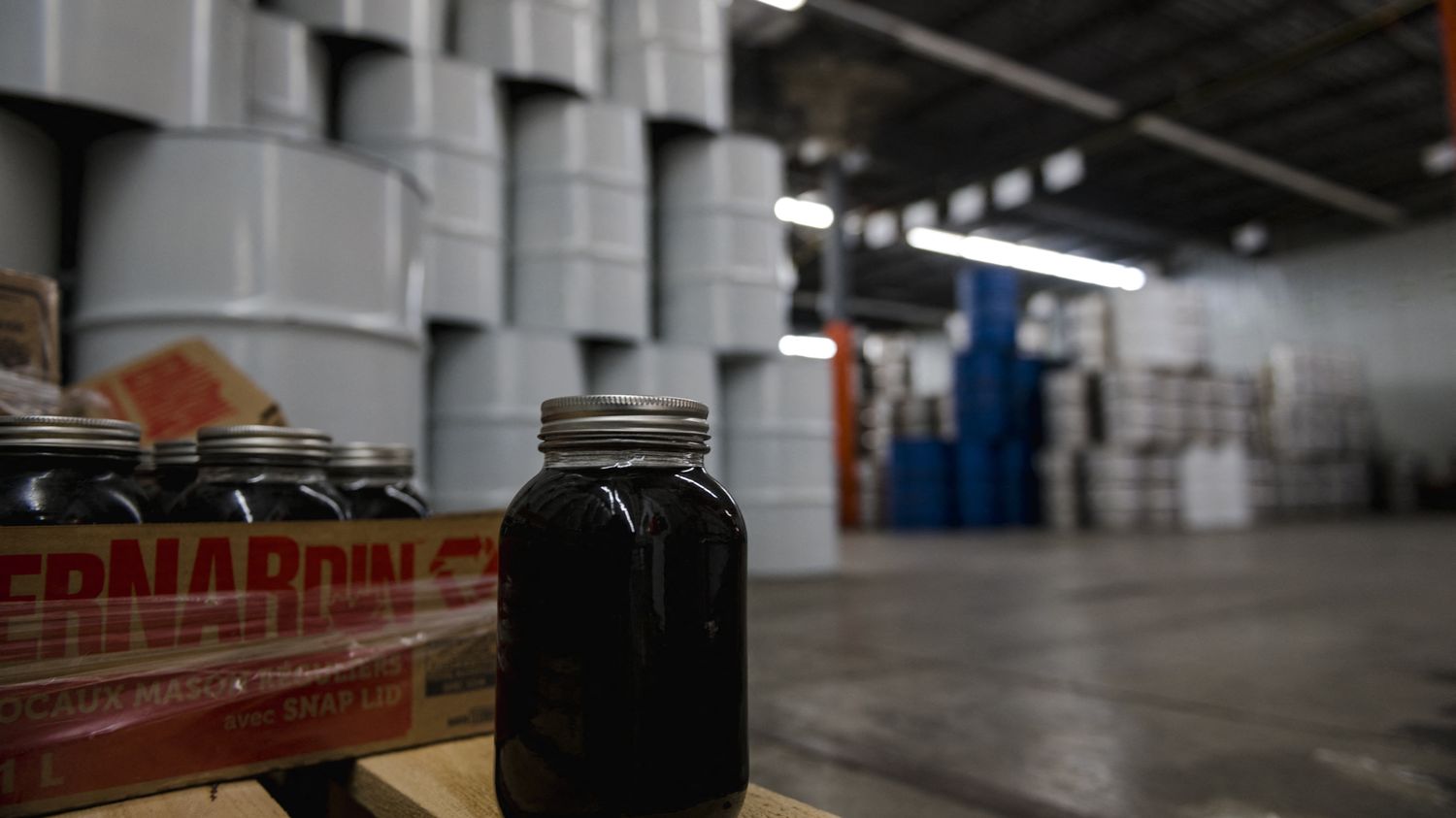The Canadian province supplies more than 70% of the stocks of this elixir made from maple whose exports have exploded in the last three years. Guided tour of one of these warehouses heavily laden with sugar.
The warehouse where we are located, in the heart of Quebec, is in a way the global “hub” for maple syrup. Millions of liters of this solution made from maple sap are stored there in barrels to ensure a regular supply on the market and a stable price.
>> REPORT. Canada: we tested the authentic recipe for these cheese fries drizzled with sauce
The operation is simple: Quebec producers of maple syrup fill large barrels of more than 100 liters during the harvest in the spring, this is called “sugar season”. These barrels are then brought here to the warehouse. “Each box you see there is a category of syrup: amber, golden, dark…”, describes Kévin Gauthier, the plant manager. In particular, it controls the pasteurization of the syrup: “The barrels are being emptied, and the syrup is going to the tanks to be mixed”.
“At the producer, the sugar level varies. We will bring it back to be in the middle and be sure that we are correct”.
Kevin Gauthier, plant managerat franceinfo
The syrups are tasted by teams of testers from an independent firm. Quebec has more than 8,000 syrup-producing farms. “We have a system that resembles that of champagne in France, it works by quota, says Joël Vaudeville, communications director for Quebec maple syrup producers. When a producer wants to sell at the grocery store or internationally, he must go through Quebec maple syrup producers who will receive the syrup, buy the syrup and then resell it to processors and buyers.
The “return to meals” has boosted demand
Last year, more than 70 million liters of maple syrup were produced in Quebec. There are so many requests that the reserve has decided to expand. It was already spread over two warehouses and the syndicate has just inaugurated a third. The decision was made after capricious weather in 2021, says Joël Vaudeville, “Quebec had a rather average harvest of maple syrup and south of the border with the United States it was really a very bad harvest. We had to release syrup from the strategic reserve”.
Of the 36 million liters of maple syrup contained in the reserve, 70% have been taken out. Especially since since the Covid, sales have increased, specifies Joël Vaudeville: “We experienced two increases of more than 20% in maple syrup exports. What we saw on Quebec’s domestic markets was the return to meals, to cooking at home. Which explained a little increase in consumption and we imagine that it is perhaps the same thing for countries abroad”.
New markets are opening their doors to Quebec’s most famous syrup. More and more Australians and Japanese are buying it.
